Mysterious Beauty of the Deep: Unveiling the Giant Phantom Jelly of the Midnight Zone
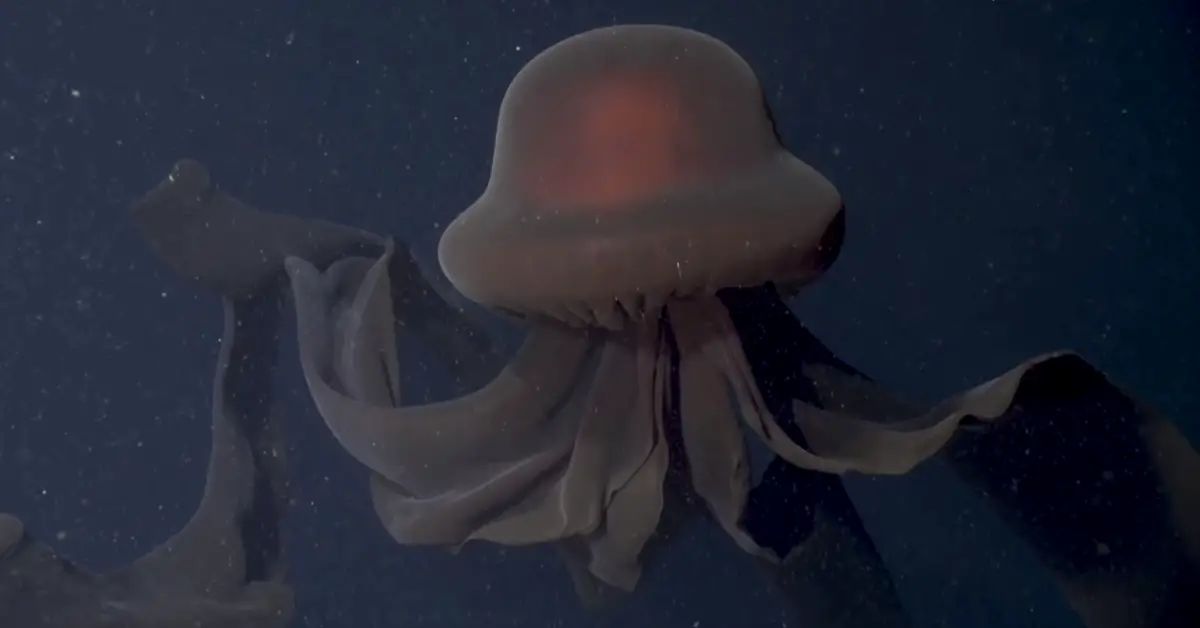
Exploring the depths of the ocean’s midnight zone, researchers from the Monterey Bay Aquarium Research Institute (MBARI) have made an extraordinary discovery. With the help of their remotely operated vehicle (ROV), they have encountered a magnificent creature that has fascinated scientists for over a century—the giant phantom jelly (Stygiomedusa gigantea).
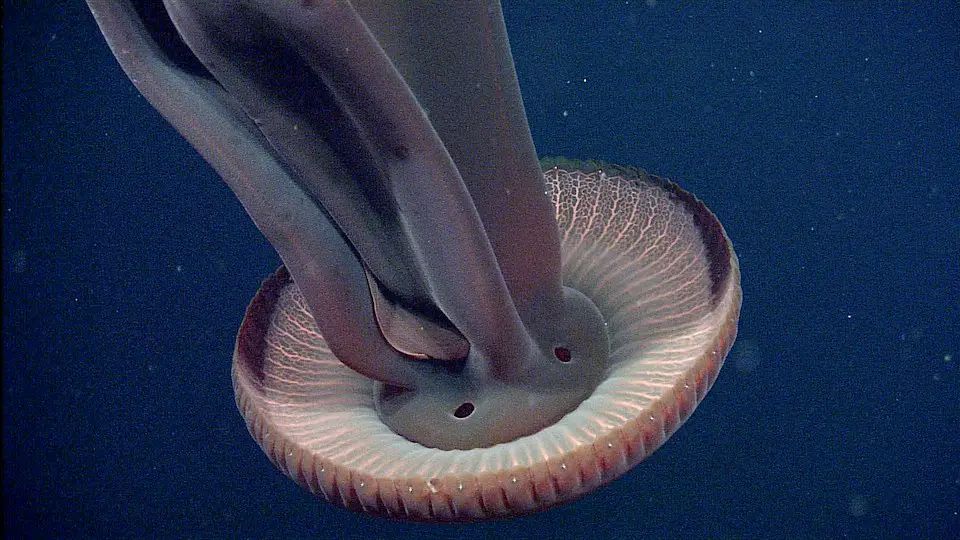
The giant phantom jelly, also known as the “giant phantom medusa,” remains a mysterious and elusive species. Despite its large size and potential global distribution, scientists have only come across this extraordinary animal about a hundred times since its first collection in 1899. The scarcity of sightings can be attributed to the immense challenge of accessing their deep-water habitat.
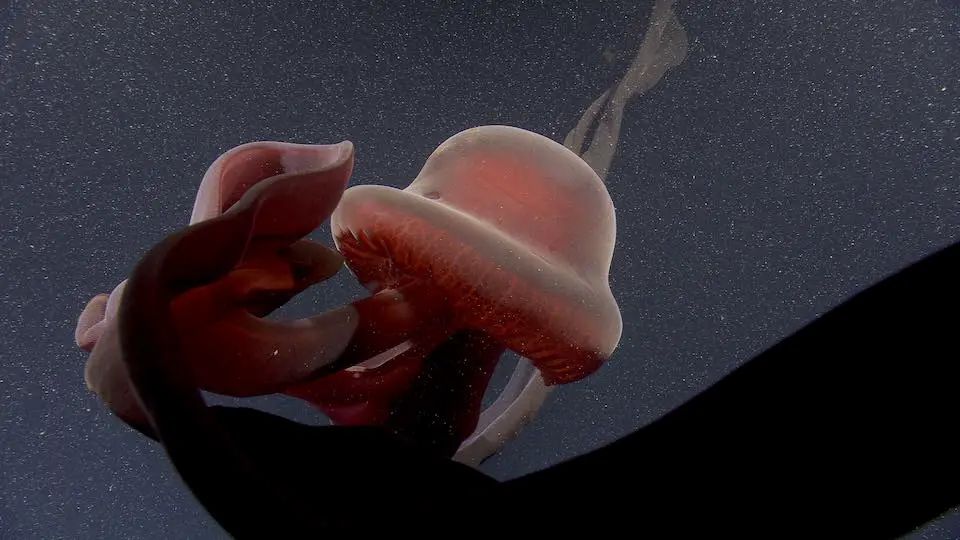
Fortunately, the development of remotely operated vehicles has revolutionized deep-sea exploration and provided valuable insights into the world beneath the waves. MBARI’s ROV Doc Ricketts has played a crucial role in expanding our knowledge of the giant phantom jelly. In November 2021, the ROV captured breathtaking footage of the jellyfish at a depth of 990 meters (3,200 feet) in Monterey Bay. With a bell measuring over one meter (3.3 feet) across and trailing four ribbon-like oral arms that can grow more than 10 meters (33 feet) long, this deep-sea denizen is a true marvel.
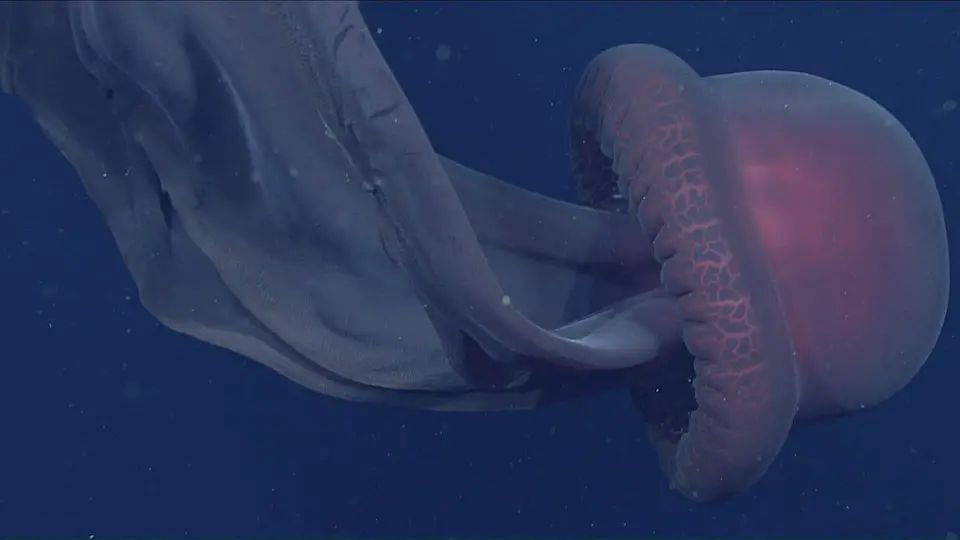
Historically, scientists relied on trawl nets to study deep-sea creatures. However, these nets proved ineffective for studying gelatinous animals like jellyfish, as they often disintegrate into a gelatinous goo when caught. The use of cameras on MBARI’s ROVs has revolutionized our ability to study these creatures in their natural environment. High-definition footage of the giant phantom jelly has provided researchers with a wealth of information about its appearance and behaviors that would have otherwise been impossible to observe with trawl-caught specimens.
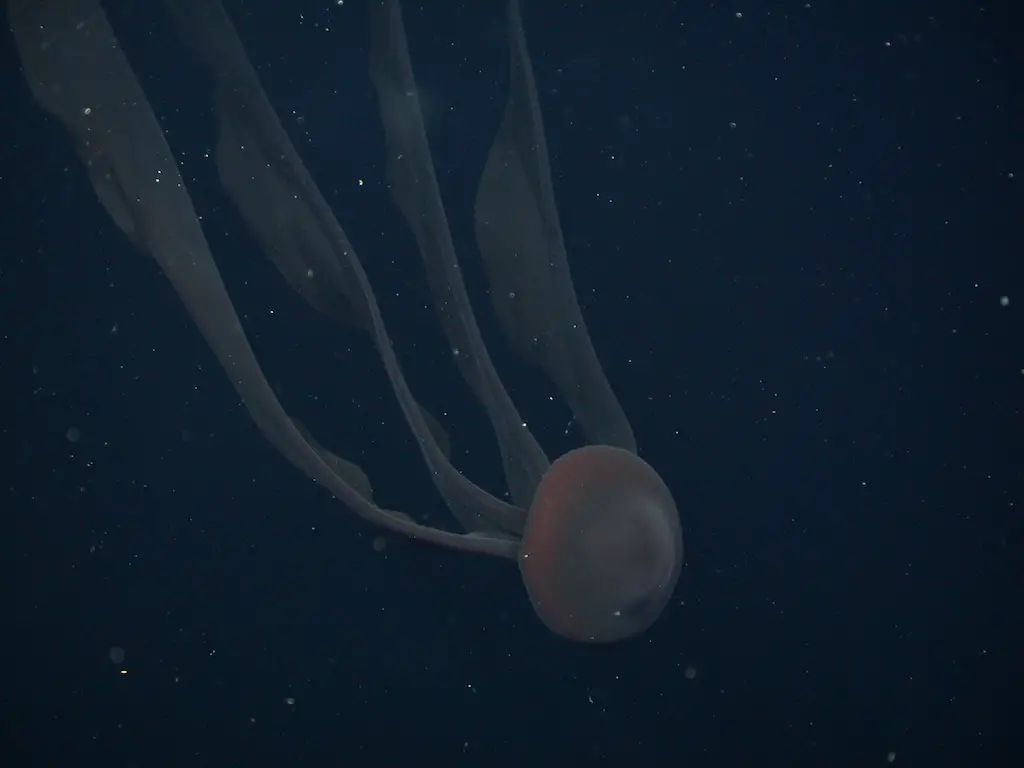
MBARI’s observations of the giant phantom jelly have shed light on its ecological role in the deep ocean. During an expedition to the Gulf of California, the ROV Tiburon captured footage of the jellyfish alongside a pelagic brotula (Thalassobathia pelagica). Researchers observed the brotula hovering above the jelly’s bell and swimming in and out of its enormous oral arms. In the vast expanse of the midnight zone, where shelter is scarce, many creatures seek refuge in the gelatinous organisms that abound in this unique environment.
– Female giant phantom jellies exhibit a unique life history. Unlike most jellies, which alternate between swimming stages and attached stages, female giant phantom jellies brood their young in pouches beneath their broad bell and give birth to live offspring.
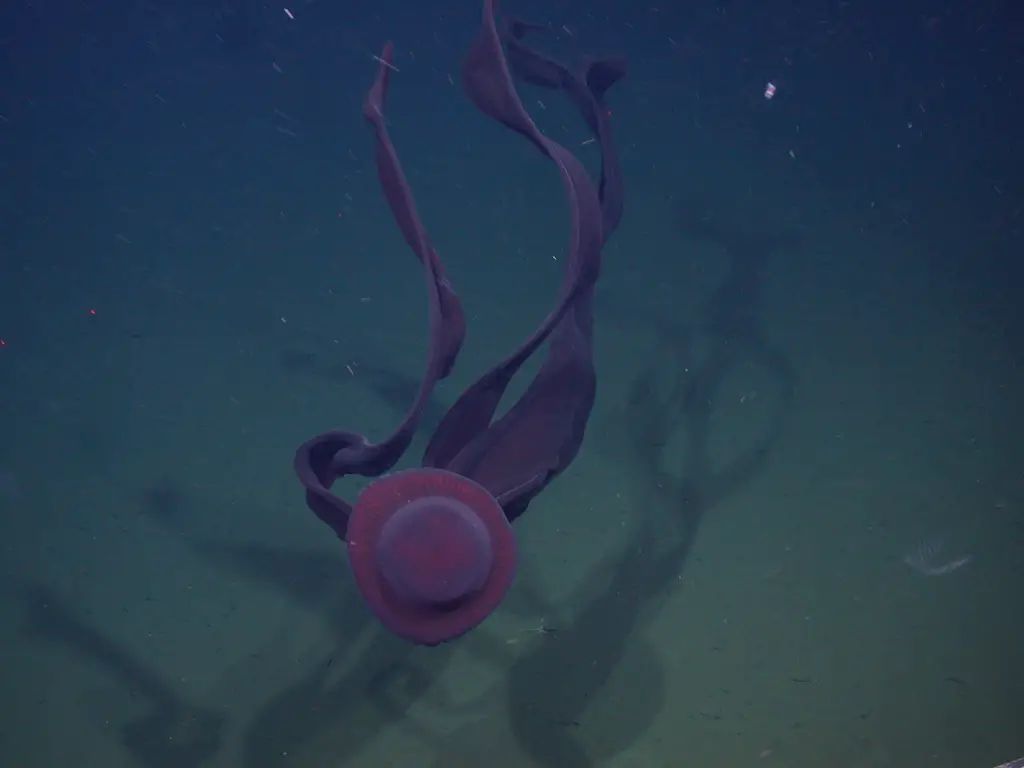
– Encountering the giant phantom jelly is a rare treat, even for MBARI researchers. Over their 34 years of deep-sea research, they have encountered this species only nine times. One individual was spotted by the ROV Doc Ricketts at a depth of 990 meters (3,200 feet) in Monterey Bay.
– The giant phantom jelly displays a reddish coloration, much like many other deep-sea animals. In the depths where red light cannot penetrate, red-colored animals appear black and blend in with the darkness. While the predators of the giant phantom jelly remain unknown, its crimson hue and substantial size likely serve as deterrents to most would-be attackers.
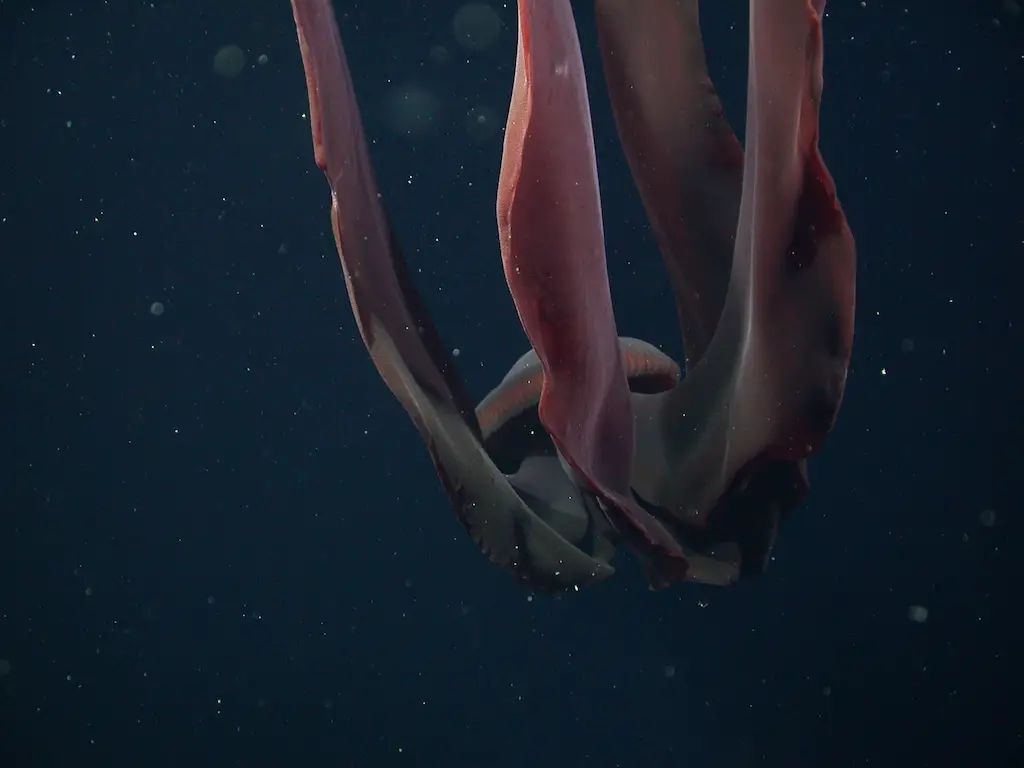
– The giant phantom jelly has a worldwide distribution and has been recorded in all ocean basins except for the Arctic. However, accessing its deep-water habitat presents significant challenges, contributing to the relative scarcity of sightings for such a large and broadly distributed species. The ROV Tiburon captured an individual in the outer reaches of the Monterey Canyon at a depth of approximately 1,100 meters (3,600 feet).
– Most observations of the giant phantom jelly have occurred in deep water, with recorded sightings ranging from depths of 750 to 2,200 meters (2,500 to 7,200 feet) in Monterey Bay, the Juan de Fuca Ridge, and the Gulf of California. However, this species has also been observed in shallow waters around Antarctica.
The giant phantom jelly continues to captivate researchers, and each encounter with this enigmatic creature brings new insights into the mysterious world of the deep sea. Thanks to the technological advancements of ROVs, scientists are slowly unraveling the secrets of this mesmerizing and rarely seen marine marvel.
Watch the video about the ghost octopus below



